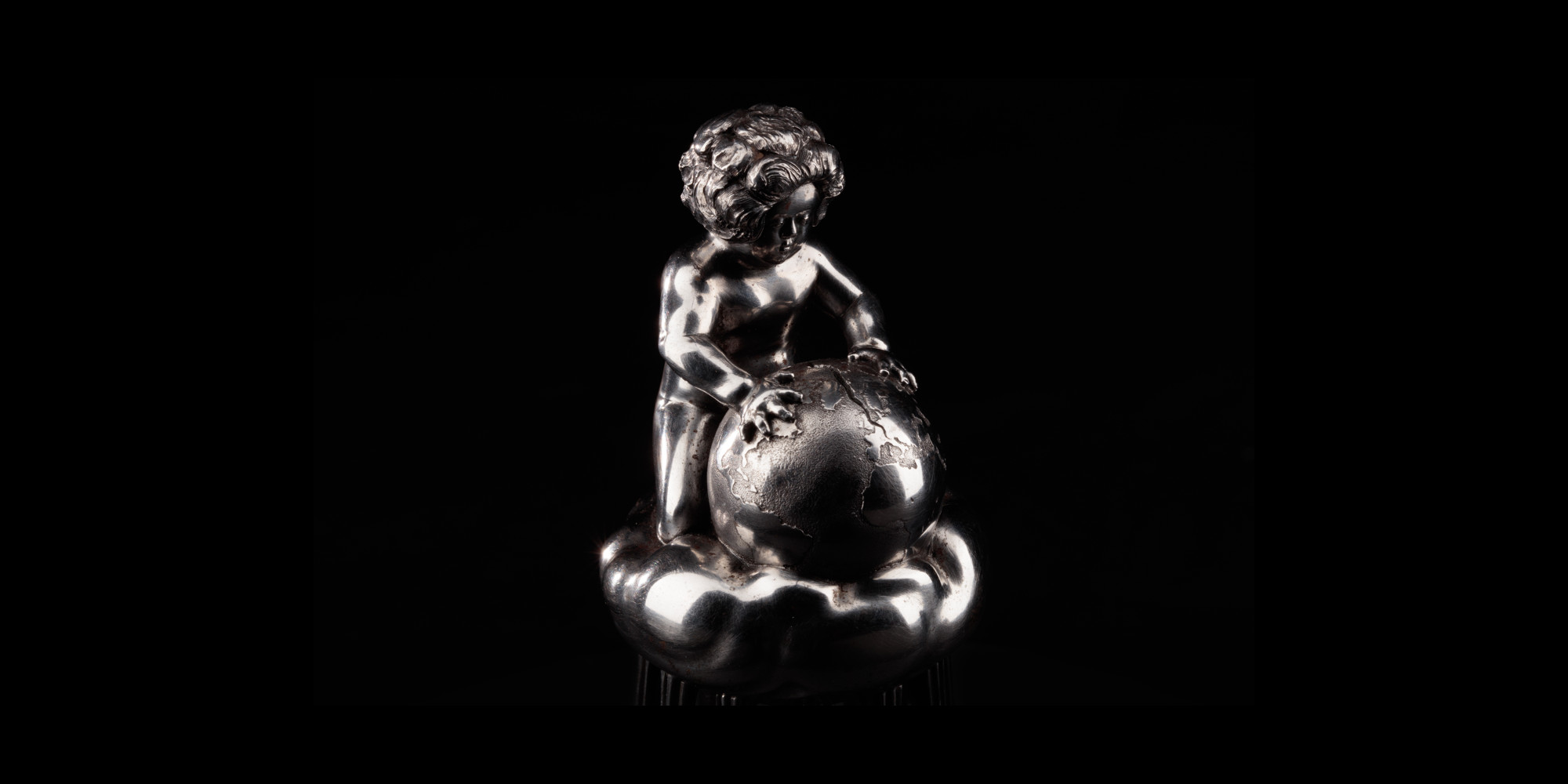The list of Sacred works of art from Austria that you can admire in Deep Space 8K is long.
Here are some examples:
Menschheitszukunft
Michael Blümelhuber (1865-1936), a native of Christkindl near Steyr, is regarded as the most important representative of the art of steel cutting, which he led to an absolute climax. His works became internationally known at the World Exhibitions in Paris in 1900 and in London in 1902. His main work “Menschheitszukunft” (Humanity’s Future) was created in 1922 in 9 months (!) and shows a naked child on the globe. With his hands, by which the nail wounds of Jesus can be recognized, he holds together the tear that threatened to split the earth after the shocks of the First World War.
Experience the work of art as an oversized gigapixel image in which you can zoom in on the smallest detail. It was photographed by the Linz photographer Florian Voggeneder.
Kefermarkter Altar
The Kefermarkt winged altar was created 1490-1497 by an unidentified carver. The altar is one of the major works of the Gothic period in German-speaking countries and is a much visited attraction located at the market town Kefermarkt near Freistadt. The winged altar is one of the three largest altars in German speaking countries of the 15th century beside the Pacher Altar in St. Wolfgang and the Marienaltar by Veit Stoss in Krakow. In the Deep Space we present this special altar as a gigapixel of the photographer Florian Voggeneder.
Pacher Altar
Painter/sculptor Michael Pacher took almost 10 years to create his three-paneled winged altar before it was transported to the parish church in Sankt Wolfgang in Upper Austria’s Salzkammergut lake district in 1479. Today, it is the only completely intact altar by Michael Pacher, one of the most important Austrian Late Gothic masters. The winged altar is a folding altarpiece (reredos) with a main shrine, two movable outer wings and two movable inner wings.
Linz-based photographer Florian Voggeneder employed leading-edge automated camera tracking technology to produce high-definition gigapixel images of the Pacher Altar. And there’s no better place to present his amazing high-resolution shots than Deep Space 8K.
Ceiling fresco in the Benedictine Abbey of Göttweig
The Benedictine Abbey of Göttweig is perched prominently on a hill 429 m above sea level, situated on the eastern edge of the Wachau – a world famous stretch of the Danube Valley. Because of its stunning hilltop location, Göttweig Abbey is also known as the Austrian Monte Cassino. Monks have been praying and working here for more than 900 years. In recognition of its international cultural significance, the abbey was inscribed in the UNESCO List of World Heritage Sites in 2000.
Visitors of the museum in the imperial wing can discover the baroque splendor of the imperial apartments designed by court architect Johann Lucas von Hildebrandt. The monumental Imperial Staircase (Kaiserstiege) is one of the most beautiful and largest baroque staircases in Europe. It is decorated with the ceiling fresco Apotheosis of Emperor Charles VI by Paul Troger (* 30 October 1698 in Welsberg, Puster Valley, County of Tyrol; † 20 July 1762 in Vienna), who is regarded as one of the most important Austrian baroque painters.
In Deep Space 8K you can enjoy high-resolution gigapixel images of this unique baroque masterpiece!
Dome painting of the parish church Holy Family
The dome painting of the Linz parish church Heilige Familie can be viewed in Deep Space as a high-resolution gigapixel image. The painting was painted in 1912 by the Tyrolean artist Andreas Strickner and shows scenes from the life of the Holy Family and the five secrets of the joyful rosary.
